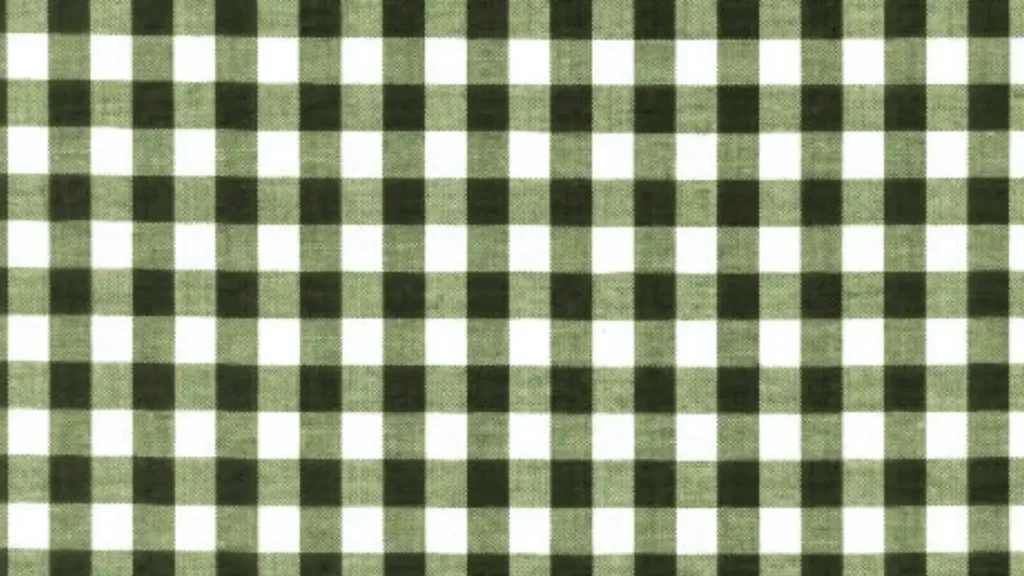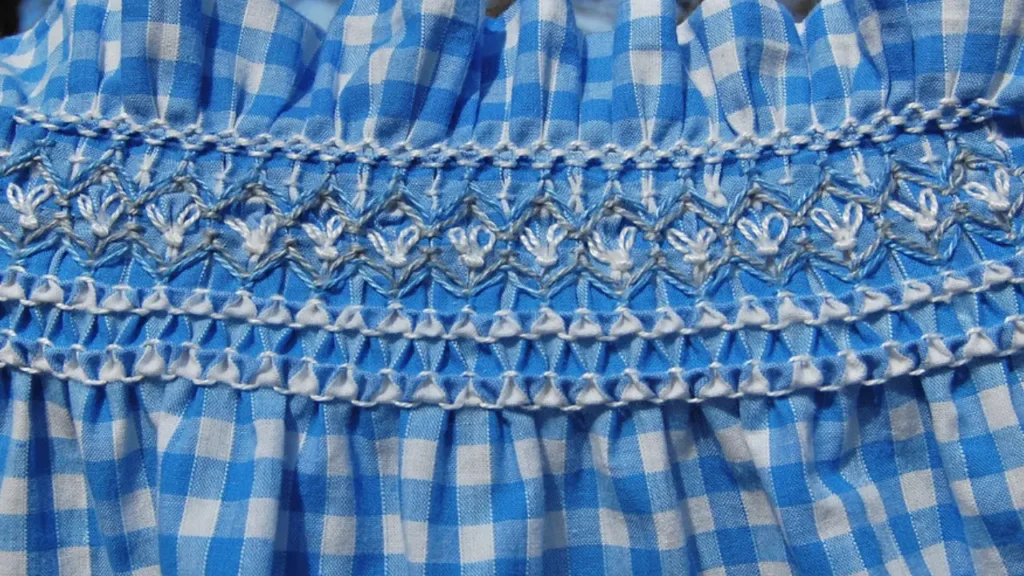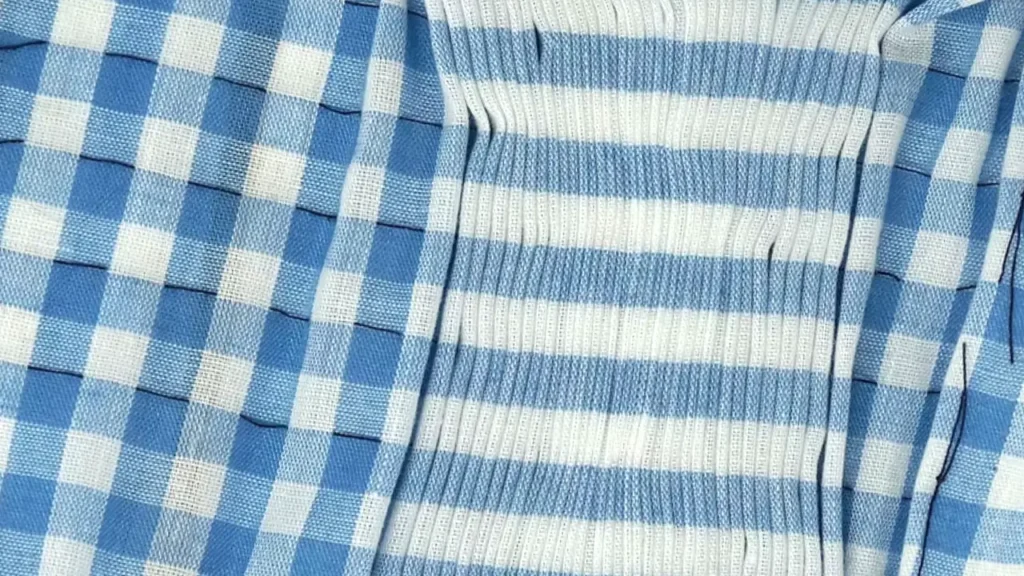Smocking gingham fabric is a beautiful and time-honored technique that adds texture and dimension to this classic checkered material. By gathering and securing the fabric with decorative stitches, you can create intricate patterns and unique embellishments, perfect for children’s wear, heirloom projects, and charming home decor. This blog will guide you through the essential steps of preparing and smocking gingham, unlocking a world of creative possibilities with this delightful fabric.
Whether you’re a seasoned seamstress or new to the art of smocking, understanding the grid-like nature of gingham makes it an ideal fabric to learn and master this technique. The even checks provide natural guidelines for gathering and stitching, simplifying the process and ensuring consistent results. Join us as we explore the tools, techniques, and inspiring ideas for transforming simple gingham into beautifully textured and detailed creations through the art of smocking.
What Is Gingham Fabric

Gingham fabric is a lightweight to medium-weight plain-woven fabric, traditionally made from cotton but now also available in blends with other fibers. Its defining characteristic is a checkered pattern of evenly sized squares formed by using dyed yarns in both the warp (lengthwise) and weft (crosswise) directions. The checks are created where the colored yarns intersect, and often feature white combined with another color, although many color combinations are now common.
The key to gingham’s appearance is that the checkered design is woven directly into the fabric structure, making it reversible with the same pattern visible on both sides. This weaving process contributes to the fabric’s durability and its relatively crisp hand. Gingham is a popular choice for its classic and versatile aesthetic, often associated with casual wear, children’s clothing, and home decor. Its breathability, ease of care, and timeless appeal contribute to its enduring popularity.
What Is Gingham Fabric Smocking

Gingham fabric smocking is a decorative needlework technique that involves creating raised, textured patterns on gingham fabric through controlled gathering and stitching. The inherent grid pattern of gingham, formed by evenly spaced checks, serves as a natural guide for creating uniform and symmetrical smocked designs. This makes gingham an ideal fabric for both beginners and experienced smockers, as the checks eliminate the need for pre-marked dots or pleating lines often required on solid fabrics.
The process of smocking gingham typically involves gathering the fabric along the check lines using a series of running stitches, which are then manipulated and secured with decorative embroidery stitches. These stitches, such as cable stitch, honeycomb stitch, and wave stitch, create a variety of three-dimensional patterns and textures. Gingham smocking is often used to embellish children’s clothing, yokes of dresses, cuffs, and decorative home items, adding a charming, traditional, and often stretchy element to the fabric.
How to Smock Gingham Fabric?

Smocking gingham fabric is a delightful way to add texture and decorative detail to your sewing projects. The even checks of gingham provide a natural grid, making it easier to create uniform pleats and symmetrical designs. By following a series of simple steps involving gathering stitches and decorative embroidery, you can transform flat fabric into beautifully textured embellishments. This guide will walk you through the process, making it accessible for both beginners and experienced sewers.
Step 1: Prepare Your Fabric and Supplies
First, you’ll need to select your gingham fabric. The size of the checks will influence the scale of your smocking. Gather your other essential supplies, including a sewing needle, strong thread (often embroidery floss or perle cotton), and a fabric marker or chalk. You might also find it helpful to use a smocking pleater if you plan on doing a lot of smocking, but it’s not necessary for small projects. Ensure your fabric is well-pressed before you begin, as any creases can interfere with accurate pleating and stitching.
Next, decide on the area of your fabric you want to smock. If you’re working on a specific garment piece, like a yoke or cuff, ensure you have the correct dimensions with added seam allowances. Using your fabric marker or chalk, mark the horizontal lines along the checks where you will be creating your gathering rows. These lines will determine the depth and uniformity of your pleats. Typically, you’ll mark several parallel lines, depending on the desired height of your smocked section.
Step 2: Create Your Gathering Rows
Now, thread your needle with your chosen strong thread. You will be creating a series of parallel running stitches along the marked horizontal lines on the wrong side of your fabric. Make small, even stitches, catching just a few threads of the fabric as you go. It’s important to keep your stitch length consistent across all rows to ensure uniform pleats. Do not knot the end of your thread at the beginning of each row; leave a long tail.
Continue creating these running stitches along each of your marked horizontal lines. Keep the rows parallel and the stitches even. Once you have completed all your gathering rows, you will have several lines of stitching running across the area you intend to smock. These threads will be used to draw up the fabric into pleats. Ensure you have left long tails of thread at both the beginning and end of each row, as these will be used for gathering and securing your pleats.
Step 3: Form and Secure Your Pleats
Carefully begin to pull on the tails of your gathering threads simultaneously. Gently ease the fabric along the threads, creating uniform vertical pleats. Distribute the pleats evenly across the width of your marked area. You will see the fabric begin to form a textured, honeycomb-like structure. Adjust the pleats until they are the desired depth and the smocked section reaches your required width.
Once your pleats are evenly formed and the smocked section is the correct size, secure the gathering threads by wrapping them around a pin or tying them off gently. Now, using a separate length of your strong thread and a tapestry needle (which has a blunt tip to avoid splitting the fabric threads), you will begin your decorative smocking stitches. These stitches will hold the pleats in place and create the visual pattern of your smocking.
Step 4: Work Your Decorative Smocking Stitches
With your pleats formed and secured, you can now begin the decorative stitching on the right side of your fabric. There are various smocking stitches you can use, such as cable stitch, honeycomb stitch, wave stitch, and rosebud stitch. Follow your chosen smocking pattern, working across the pleats and connecting them with your needle and thread. Each stitch will secure the pleats in a specific way, contributing to the overall texture and design of your smocking.
Continue working your chosen smocking stitches across all the pleats, following your pattern row by row. Ensure your stitches are even and your tension is consistent to create a balanced and attractive smocked design. As you work, the flat gingham fabric will transform into a beautifully textured and embellished surface. Once you have completed your decorative stitching, carefully remove the gathering threads. Your smocked gingham fabric is now ready to be incorporated into your sewing project.
Conclusion
Mastering the art of smocking gingham fabric opens a world of charming textures and intricate designs. This technique, with its characteristic gathered pleats and decorative stitching, adds a touch of timeless elegance to garments and home décor alike. By carefully preparing the fabric and following precise stitching lines, you can transform simple gingham into beautifully embellished textiles that showcase both skill and creativity.
The inherent grid pattern of gingham makes it an ideal fabric for learning and perfecting smocking. The even checks serve as natural guidelines, simplifying the creation of uniform pleats and ensuring symmetrical designs. As you become more comfortable with the basic techniques, you can explore a variety of smocking stitches and patterns, adding depth and complexity to your projects. The result is a fabric with unique textural interest and a handcrafted appeal.
Ready to embark on your smocking journey? Fanda Fabrics offers a wide selection of high-quality wholesale gingham fabric, perfect for practicing and perfecting your smocking techniques. Our diverse range of colors and check sizes provides the ideal canvas for your creative endeavors. Contact us today to explore our gingham collection and discover the perfect fabric for your next smocking project!
